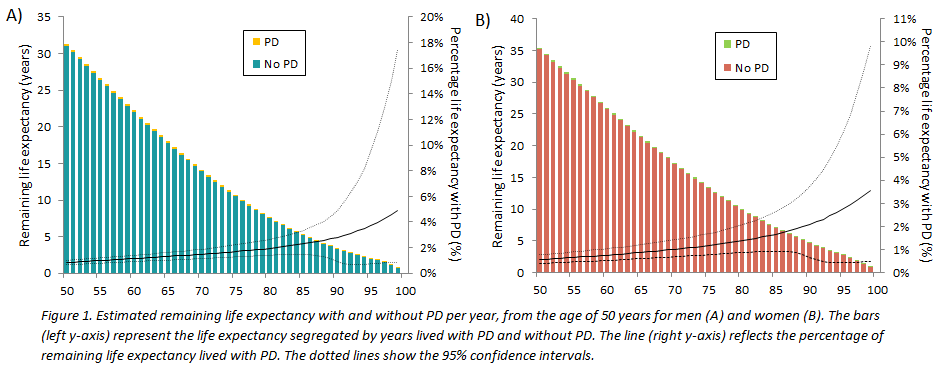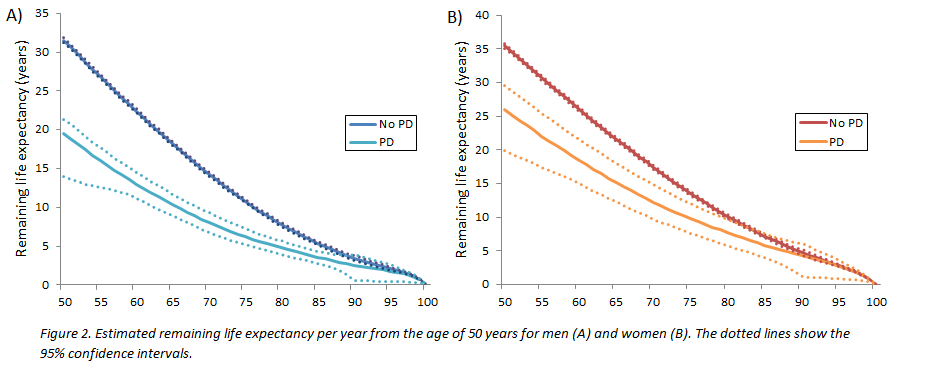Session Information
Date: Wednesday, September 25, 2019
Session Title: Epidemiology
Session Time: 1:15pm-2:45pm
Location: Les Muses, Level 3
Objective: To determine (1) the burden of Parkinson’s disease (PD) in the general population and (2) the life expectancy after the diagnosis of PD.
Background: Detailed estimates of the prevalence and incidence of PD have been reported in the literature. However, data on life years lived with and without PD are still limited. Life expectancy estimates are important both for healthcare policy making and for care planning of individual patients.
Method: We conducted this study as part of the Rotterdam Study, an ongoing, population-based cohort study in the Netherlands. We included 12,400 participants of 50 years and older, free of PD. We constructed multistate life tables with three states, and transitions were possible from no PD to PD, no PD to death and PD to death. For each transition we calculated age- and sex-specific rates with Poisson regression using the Gompertz distribution to estimate the remaining life expectancy per year of age. From these rates we calculated (1) the proportion of the remaining life expectancy lived with PD among the general population, and (2) the remaining life expectancy among those with incident PD.
Results: The mean age of our study population was 64.6 (SD 9.5) years and 57.4% were women. During follow-up, 141 participants (52.5% men) developed PD. The mean age of PD diagnosis was 76.7 (SD 7.9) years. Figure 1 shows the remaining life expectancy per year of age from 50 to 99 years in the general population. The average proportion of the remaining life expectancy lived with PD in the general population ranged from 0.9% at 50 years to 4.9% at 99 years in men, and from 0.6% at 50 years to 3.5% at 99 years in women. The life expectancy for men of 50 years old with PD was 19.5 years, which was significantly lower than the life expectancy of 31.5 years for 50 year old men without PD. The corresponding life expectancy estimates for women of 50 years old were 25.9 years in women with PD, compared to 35.4 years in women without PD. Figure 2 shows the remaining life expectancy of men and women with PD compared to men and women without PD from 50 to 99 years of age.
Conclusion: Among the general population, the proportion of the life expectancy lived with PD is small. Nevertheless, among PD patients, a large negative impact of the disease can be found on the remaining life expectancy. [Figure 1] [Figure 2]
To cite this abstract in AMA style:
L. Dommershuijsen, A.. Ikram, K. Ikram. Life expectancy with and without Parkinson’s disease in the general population [abstract]. Mov Disord. 2019; 34 (suppl 2). https://www.mdsabstracts.org/abstract/life-expectancy-with-and-without-parkinsons-disease-in-the-general-population/. Accessed January 4, 2026.« Back to 2019 International Congress
MDS Abstracts - https://www.mdsabstracts.org/abstract/life-expectancy-with-and-without-parkinsons-disease-in-the-general-population/


